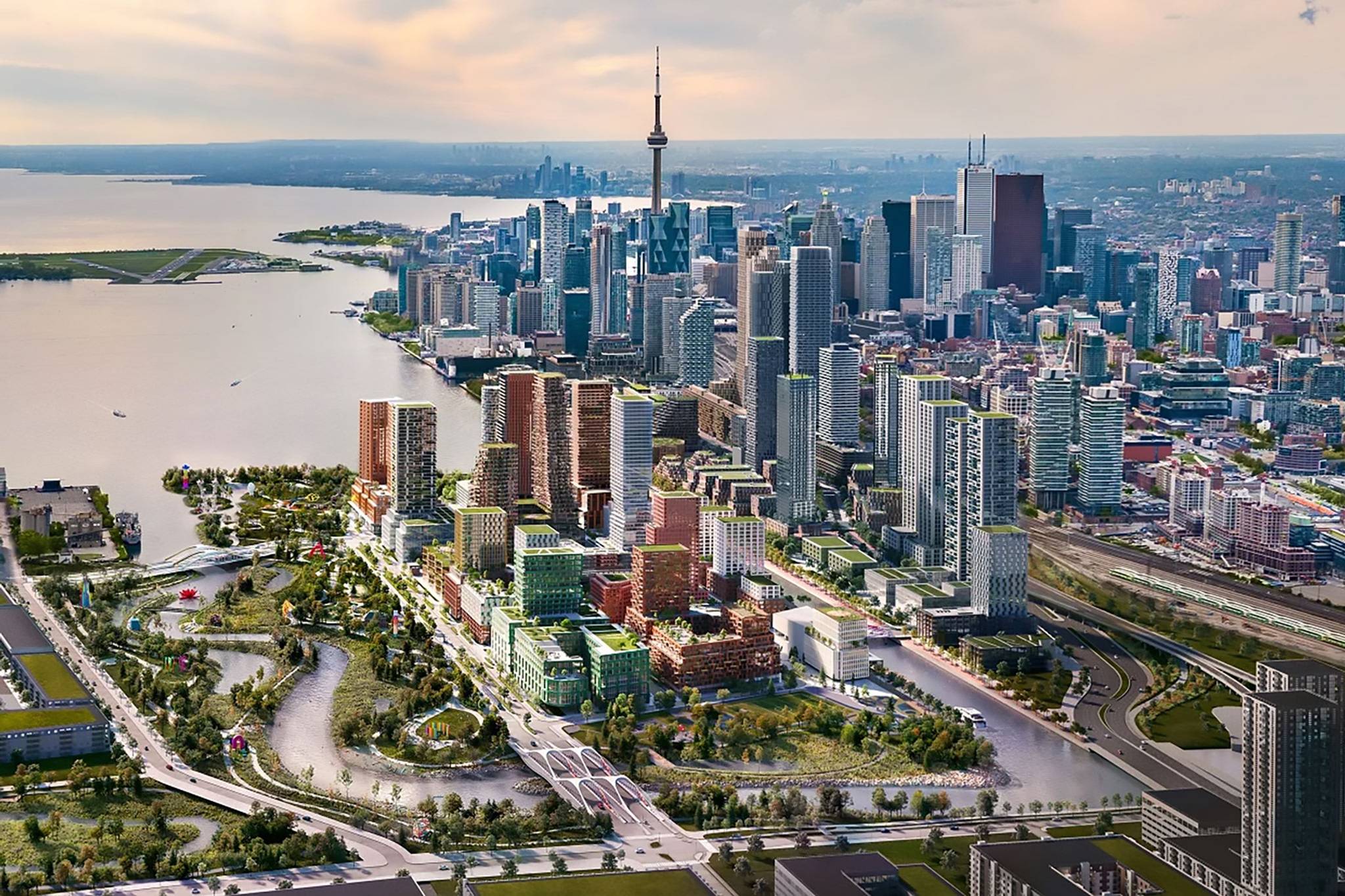Toronto opens historic sustainable park development
It’s is part of a $1.4-billion tri-government investment in flood protection and waterfront renewal effort.

Key Takeaways:
- Biidaasige Park, Toronto’s largest new park in over a generation, officially opened on the newly created island Ookwemin Minising as part of a $1.4-billion flood protection and waterfront revitalization project funded by federal, provincial, and municipal governments.
- The park features Indigenous-inspired art, recreational amenities like ziplines and water access, and supports future mixed-use development expected to house over 15,000 residents and create nearly 3,000 jobs.
- The broader waterfront revitalization aims to create 100,000 new homes and stimulate economic growth, with an additional $975 million committed in 2025 to accelerate housing and destination development on Ookwemin Minising and Quayside.
The Whole Story:
Toronto’s newest island, Ookwemin Minising, officially welcomed visitors Friday with the opening of Biidaasige Park, the largest new park to open in the city in more than a generation.
The 50-acre greenspace, located at the mouth of the Don River, is part of a $1.4-billion tri-government investment in flood protection and waterfront renewal led by the federal, provincial and municipal governments. Another 10 acres of parkland, along with the Lassonde Art Trail, is scheduled to open in 2026.
Biidaasige — an Anishinaabemowin word meaning “sunlight shining toward us” — features picnic areas, playgrounds with ziplines, large animal sculptures inspired by Indigenous traditions, recreational trails, and water access for non-motorized boats. The park also includes two dog off-leash areas and spaces designed to support fishing, birdwatching, and cycling.
Officials say the park and the newly naturalized Don River represent an innovative approach to flood protection that unlocks land for future development, including mixed-use neighbourhoods planned to house more than 15,000 residents and create nearly 3,000 jobs.
The revitalization project, which began more than 20 years ago, is part of a broader plan that will see the eastern Toronto waterfront home to 100,000 people once complete. In January, the three governments agreed to contribute an additional $975 million to accelerate housing and destination development on the island and nearby Quayside.
Federal Environment Minister Julie Dabrusin said the park is a symbol of what governments can achieve when working together to build resilient and vibrant communities.
“Biidaasige Park is more than a park — it’s a transformation of Toronto’s waterfront that ensures critical flood protection and lays the foundation for future housing and public spaces,” Dabrusin said.
Toronto Mayor Olivia Chow highlighted the partnership with Indigenous communities in the project, noting the importance of placekeeping in the revitalized space.
“This is a historic day for Torontonians,” Chow said. “Thanks to collaboration with Indigenous partners, we have advanced $2.4 billion to support a new community that honours the land and builds a city within a city.”
The island, whose name means “place of the black cherry trees,” blends natural flood protection features with green spaces and urban development. It is designed to showcase sustainable development practices and provide new recreational and cultural opportunities for residents and visitors alike.
